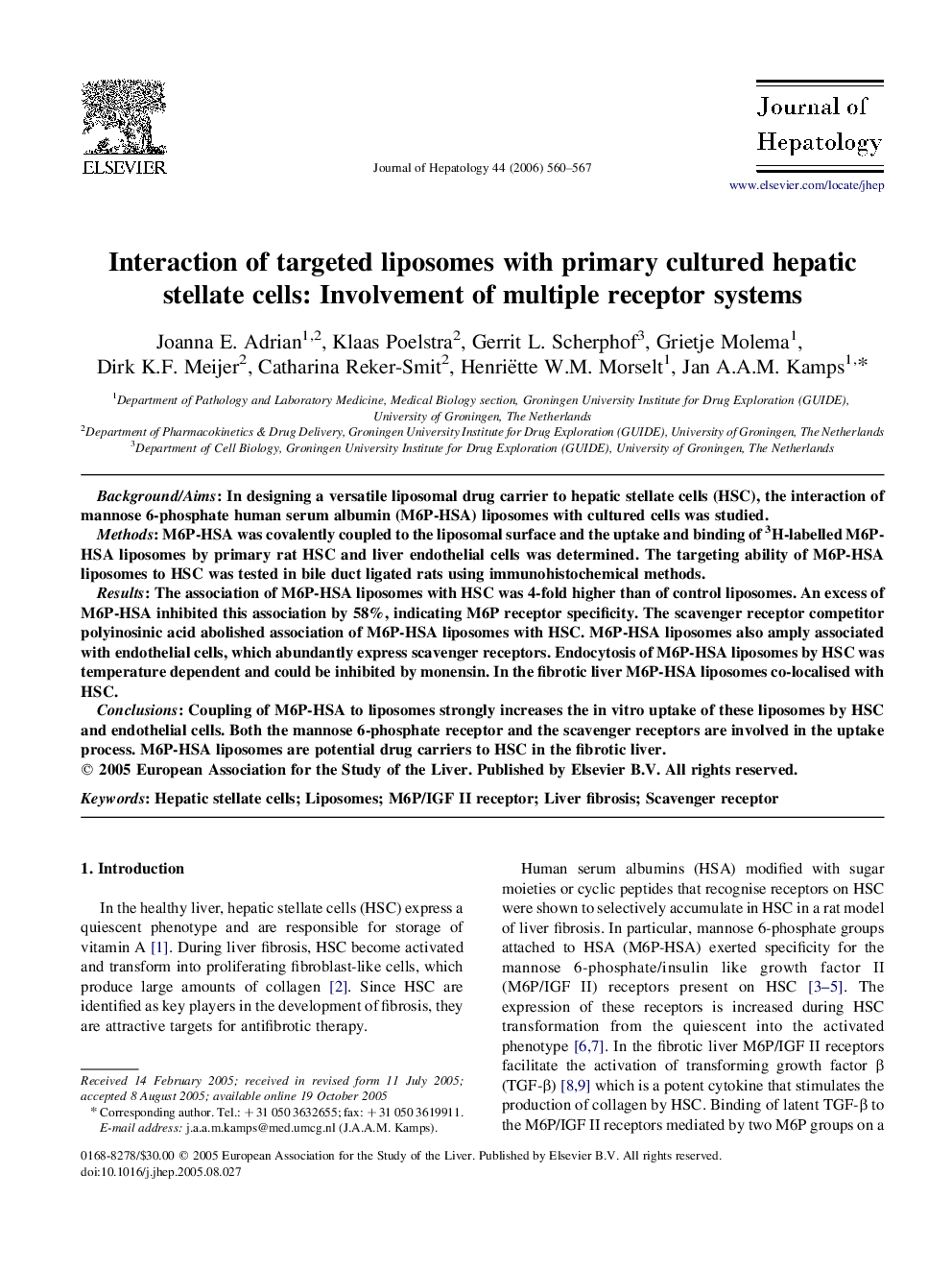| Article ID | Journal | Published Year | Pages | File Type |
|---|---|---|---|---|
| 3314979 | Journal of Hepatology | 2006 | 8 Pages |
Background/AimsIn designing a versatile liposomal drug carrier to hepatic stellate cells (HSC), the interaction of mannose 6-phosphate human serum albumin (M6P-HSA) liposomes with cultured cells was studied.MethodsM6P-HSA was covalently coupled to the liposomal surface and the uptake and binding of 3H-labelled M6P-HSA liposomes by primary rat HSC and liver endothelial cells was determined. The targeting ability of M6P-HSA liposomes to HSC was tested in bile duct ligated rats using immunohistochemical methods.ResultsThe association of M6P-HSA liposomes with HSC was 4-fold higher than of control liposomes. An excess of M6P-HSA inhibited this association by 58%, indicating M6P receptor specificity. The scavenger receptor competitor polyinosinic acid abolished association of M6P-HSA liposomes with HSC. M6P-HSA liposomes also amply associated with endothelial cells, which abundantly express scavenger receptors. Endocytosis of M6P-HSA liposomes by HSC was temperature dependent and could be inhibited by monensin. In the fibrotic liver M6P-HSA liposomes co-localised with HSC.ConclusionsCoupling of M6P-HSA to liposomes strongly increases the in vitro uptake of these liposomes by HSC and endothelial cells. Both the mannose 6-phosphate receptor and the scavenger receptors are involved in the uptake process. M6P-HSA liposomes are potential drug carriers to HSC in the fibrotic liver.
